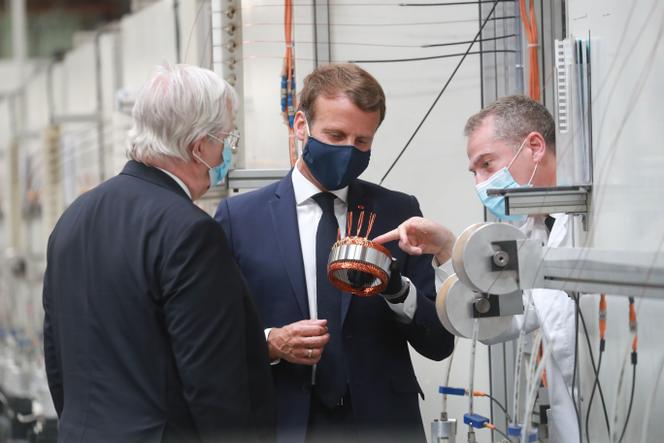
France and Germany share more or less the same national low-carbon strategies. The former is aiming for greenhouse gas neutrality by 2050, the latter by 2045. With the industrial sector alone accounting for 21% of emissions in the European Union, it is pertinent to compare the performance of these two neighboring countries, major economic players on the continent. This is the work carried out by La Fabrique de l’Industrie, a think tank close to the French Employers’ Association, in collaboration with McKinsey. In a study conducted by economist David Lolo and published on Thursday, September 5, the think tank asked whether or not industrial France is greener than its German counterpart.
According to Eurostat data, French factories are on average more carbon-intensive than those on the other side of the Rhine. In terms of scope 1 greenhouse gas emissions (resulting from a company’s direct activities and processes), “France’s manufacturing industry is almost 30% more carbon-intensive than Germany’s,” said Eurostat. On the other hand, if we focus on scope 2 emissions (linked to energy consumption by these companies), “France’s less carbon-intensive electricity mix plays in its favor.”
The specific nature of the two countries’ productive fabrics influences their performance. Metallurgy, chemicals, cement, and oil refining, all high carbon emitters, are more present in France than in Germany. Conversely, some less carbon-intensive activities, such as automotive and machinery and equipment manufacturing, are over-represented on the other side of the Rhine. Germany’s better results can also be explained by its technological advances. “An industry better anchored in high-end production generates more added value than its competitors, without necessarily producing more greenhouse gas emissions, which lowers its carbon and energy intensity,” said Lolo.
France is catching up
The study reveals that, when examining individual sectors, the French and German steel industries have similar levels of greenhouse gas emissions. Germany leads in cement production, yet France is making significant strides in the adoption of alternative fuels. Conversely, the French glass industry emits less than its German counterpart, but this performance is explained by the weight of customer markets. “The French glass industry is better positioned than its German counterpart in the manufacture of hollow glass [lower emitters], because it counts the beverage and perfume sectors among its main outlets, whereas its German counterpart mainly supplies the automotive industry with flat glass [higher emitters],” the study said.
You have 19.81% of this article left to read. The rest is for subscribers only.